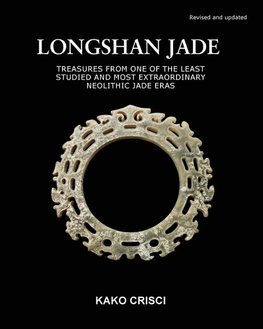
-
 Anglický jazyk
Anglický jazyk
Longshan Jade
Autor: Kako Crisci
The cultural landscape of the middle-lower Yellow River valley and coastal areas in the third millennium B.C. has been identified as the cradle of Chinese civilization. It was the home of the legendary Three Sovereigns and Five Emperors period, which commonly... Viac o knihe
Na objednávku, dodanie 2-4 týždne
77.97 €
bežná cena: 88.60 €
O knihe
The cultural landscape of the middle-lower Yellow River valley and coastal areas in the third millennium B.C. has been identified as the cradle of Chinese civilization. It was the home of the legendary Three Sovereigns and Five Emperors period, which commonly signified the birth of Chinese civilization, roughly 4,000-6,000 years ago. The Central Plains Region, not too far away from the first dynasty, Xia (2,100-1,600 B.C.), was also a historic territory of the Longshan era (Early Longshan 3,000-2,600 B.C., Late Longshan 2,600-1,900 B.C.) and was an essential component of both primordial and prehistoric civilization. Legendary mythologies derived from there taught people how to ignite a fire, cultivate farmlands, build houses, use herb medicines, establish a complex political organization, and possibly, write and count. The 1980s saw additional discoveries of the Hongshan Culture in the northeast and the Liangzhu Culture in the southeast, providing evidence for scholars to further trace the origins of Chinese civilization. Since then, there have been debates concerning the veracity of the old idea that China's Central Plains were the sole cradle of the country's civilization. Nonetheless, the Three Sovereigns and Five Emperors were still believed as the direct common ancestors of the Chinese. Ancient jade was crucial to the development of society throughout the Longshan period. In addition to being used in religious rituals and as a material for sculpting statues of important political and social figures, jade was also considered a conduit to the gods. The Jade Renaissance had arrived. Occurring between the Stone Age and the Bronze Age, there is no other country or culture in antiquity that can match China's Jade Age. This is the first English-language book dedicated to the Neolithic jade artifacts known as Longshan Jade, and it features more than eighty images and photographs of these magnificent pieces of art. Along with detailed background, it showcases the exquisite craftsmanship and aesthetic value of Longshan jade from the heyday of jade culture in China and introduces it to the West. Splitting the area in half, the western region is home to the Qijia, Taosi, and Shimao Neolithic cultures while the eastern region is home to the other five major Neolithic civilizations of the region (Dawenkou, Shijiahe, Henan Longshan, Shandong Longshan, and Erlitou). Although Dawenkou is a predecessor of Longshan and Erlitou is a descendant of Longshan, by arranging the jade cultures from the same region successively and describing the personalities, social roles, and cultural significance of those Neolithic jade artifacts, it not only provides readers with the most recent research from reputable scholars (such as Hayashi Minao, Deng Shuping, Yang Boda, Zhu Naicheng, etc.)but also offers some general guidelines on how to read the Neolithic jades from different regions. By dissecting each piece's production process in minute detail, the author provides not only a means by which readers can learn to recognize a work of genius but also, by drawing parallels to modern-day globalization, evidence of the constant cultural exchanges that characterize the Neolithic period.
- Vydavateľstvo: Dynastic Jade Gallery
- Rok vydania: 2022
- Formát: Paperback
- Rozmer: 254 x 203 mm
- Jazyk: Anglický jazyk
- ISBN: 9798986702889


 Nemecký jazyk
Nemecký jazyk 








